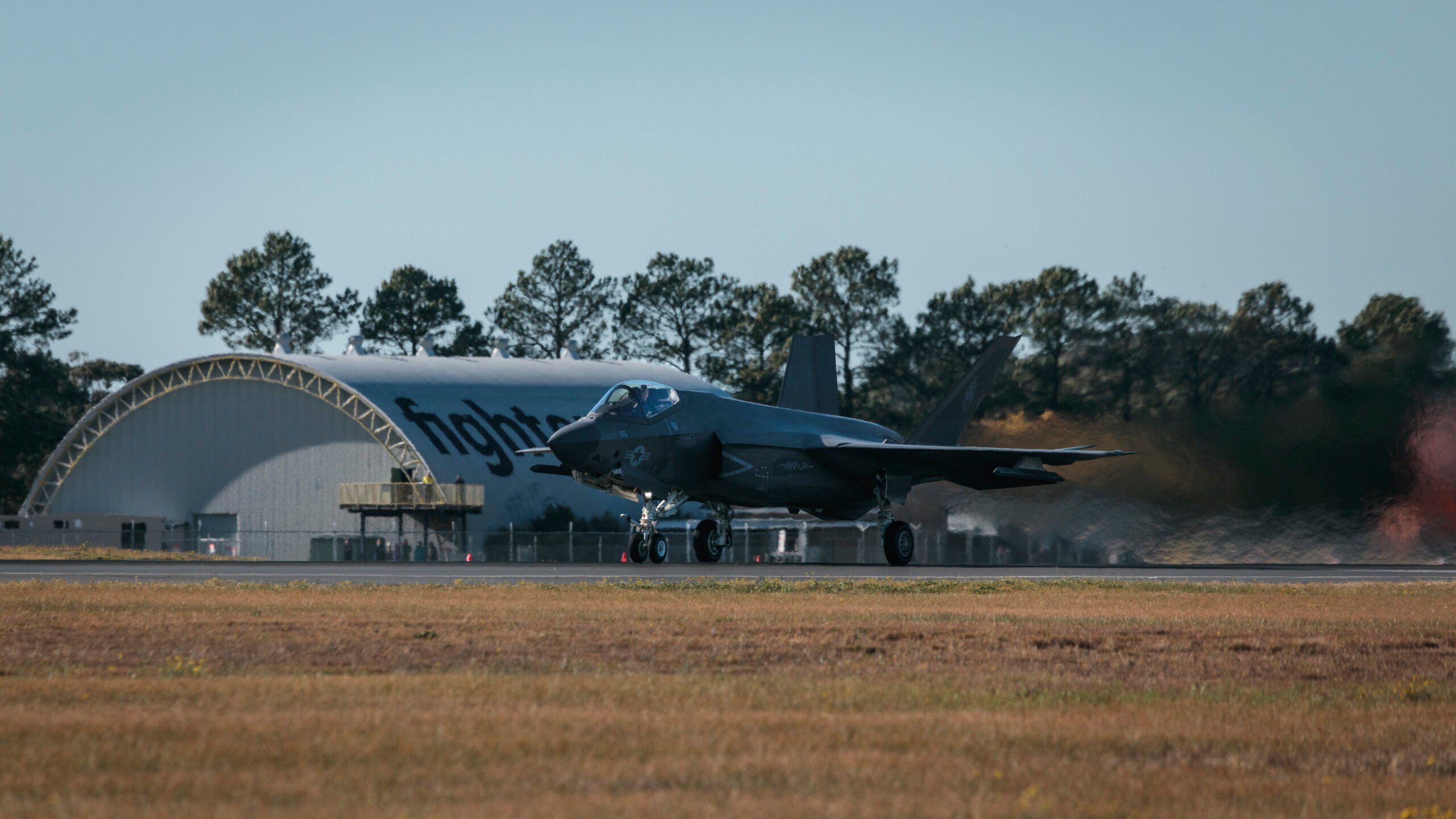‘Regional hub’ for F-35 work: Australia boots up stealth coating factory for Indo-Pacific

A United States Marine Corps (USMC) F-35C from Marine Fighter Attack Squadron 314 (VMFA-314) departs last month from RAAF Base Williamtown, NSW. Credit: LAC Samuel Miller
SYDNEY — In what analysts said was a clear sign of its growing value as a strategic center to the Indo-Pacific, Australia has announced it plans to build a $100 million AUD ($64 million USD) factory to produce, apply and maintain the stealth coatings so critical to the F-35.
Pat Conroy, the Australian defense industry minister, made the announcement in a stop with local journalists at Williamtown Airport in New South Wales, about two hours north of Sydney, near the eponymous air base.
“Importantly, this (BAE Systems Australia) stealth coating facility will not just be important to Australia’s fleet of F-35s. It will support F-35s in the region, whether it’s visiting US Marines aircraft; it could be F-35s from Singapore or broader in the Indo-Pacific. So this is all about advancing the most advanced capability in the world, building a facility well in excess of $100 million, creating 25 well-paid secure jobs, adding to the 360 jobs already here working on maintaining and upgrading the F-35,” Conroy said.
“We are the regional hub for maintenance of the F-35 for the entire South Pacific,” he added.
Given Australia’s location, sending aircraft back to the United States for such maintenance would be costly in time and money. But there are broader lessons to be drawn from the commitment by BAE and Australia, as well as the US government’s approval of it.
“There’s quite a few ways to look at BAE’s move. For one thing, it confirms stealth is here to stay; increasingly, stealth is the price of entry for military aircraft. It started with fighters, then bombers, and now even tanker and cargo aircraft are increasingly expected to employ stealth. So BAE is trying to get ahead of global demand,” notes JJ Gertler, aviation expert with the Center for Strategic and International Studies in Washington. “It also says that Australia is a sought-after partner. Decisions about where to put facilities like this are made based on commitments for industrial participation in existing programs (as with F-35), but also in the hope that the country will become a partner and/or customer for future programs, like BAE’s Global Combat Aircraft (nee Tempest.) With many countries involved in future combat aircraft programs (like South Korea, India, Taiwan, Turkey, even Azerbaijan…), placing a significant facility in country says that BAE hopes Australia will favor programs they are a part of, and that will bring work to Williamtown.
Gertler also said the move was a “vote of confidence in Australia as a technically sophisticated country but also one trusted to know how to keep secrets.
“So it is a development not just about where Australia is today, but firmly planting the Australian flag in aviation’s future,” he said.
RELATED: FCAS? SCAF? Tempest? Explaining Europe’s sixth-generation fighter efforts
The operational effects of the move are also significant, according to Ashley Townshend, an Indo-Pacific defense expert at the US Studies Center at the University of Sydney.
“This is a latest in a series of bilateral defence industrial initiatives that will position Australia as a capable strategic hub for the maintenance, sustainment and overhaul of both ADF [Australian Defence Force] and allied platforms,” Townshend said. “Not only does the Williamtown stealth-coating facility provide Australia with a valuable sovereign capability and cut down on cumbersome timelines for sustaining Australian F-35s in the United States, it will also serve as a second source of service for US aircraft in the region.”
That capability “could prove critical in the event of a major Indo-Pacific conflict, which is likely to see large numbers of US and possibly Japanese aircraft use Australia as a rear hub for operations and sustainment. That said, the alliance still has a long way to go before Australia has the regulatory authorities, infrastructure and material required to fully enable high-end operations from the contingent.”